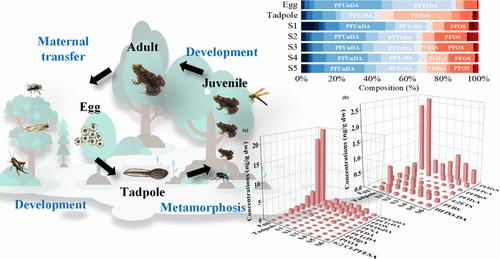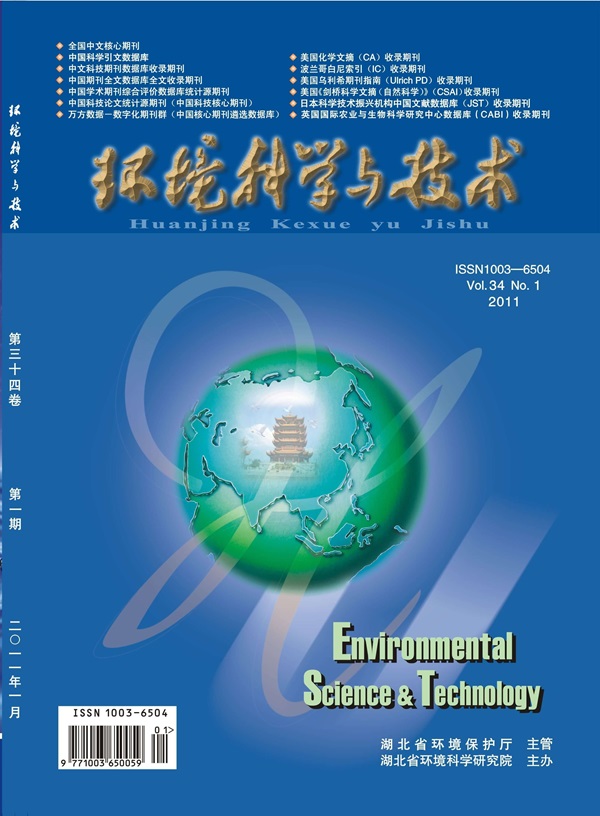Bioaccumulation and Transfer of Legacy and Emerging Per- and Polyfluoroalkyl Substances throughout the Lifecycle of a Tropical Amphibian Species Fejervarya limnocharis
IF 10.8
1区 环境科学与生态学
Q1 ENGINEERING, ENVIRONMENTAL
引用次数: 0
Abstract
Pollutant bioaccumulation in amphibians is complex owing to their unique physiological characteristics and biphasic lifecycle. This study investigated per- and polyfluoroalkyl substances (PFASs) in water, insects, and rice frogs (Fejervarya multistriata) throughout their entire lifecycle. The median total PFAS concentrations were 1.15–5.53, 65.6, 7.31, 7.33, and 2.24–31.6 ng/g dry weight in insect, egg, tadpole, juvenile frog, and adult frog samples, respectively. Concentrations of PFASs with protein–water distribution coefficients (log KPW) > 2 decreased from eggs to tadpoles and were constant from tadpoles to frogs. By contrast, concentrations of PFASs with log KPW < 2 reached apex concentrations in tadpoles and juvenile frogs. No growth dilution was observed for PFASs from juvenile to adult frogs. Stable isotope and fatty acid compositions in frog and insect samples indicated little change in diet sources during frog growth. The bioaccumulation factors of PFASs with log KPW < 3 were decreased in tadpoles and frogs, suggesting preferential accumulation of low-proteinphilic PFASs from water. The distinct bioaccumulation profiles of PFASs during rice frog development emphasize the need for ecological and toxicological studies conducted throughout the amphibian lifecycle.

求助全文
约1分钟内获得全文
求助全文
来源期刊

环境科学与技术
环境科学-工程:环境
CiteScore
17.50
自引率
9.60%
发文量
12359
审稿时长
2.8 months
期刊介绍:
Environmental Science & Technology (ES&T) is a co-sponsored academic and technical magazine by the Hubei Provincial Environmental Protection Bureau and the Hubei Provincial Academy of Environmental Sciences.
Environmental Science & Technology (ES&T) holds the status of Chinese core journals, scientific papers source journals of China, Chinese Science Citation Database source journals, and Chinese Academic Journal Comprehensive Evaluation Database source journals. This publication focuses on the academic field of environmental protection, featuring articles related to environmental protection and technical advancements.
 求助内容:
求助内容: 应助结果提醒方式:
应助结果提醒方式:


